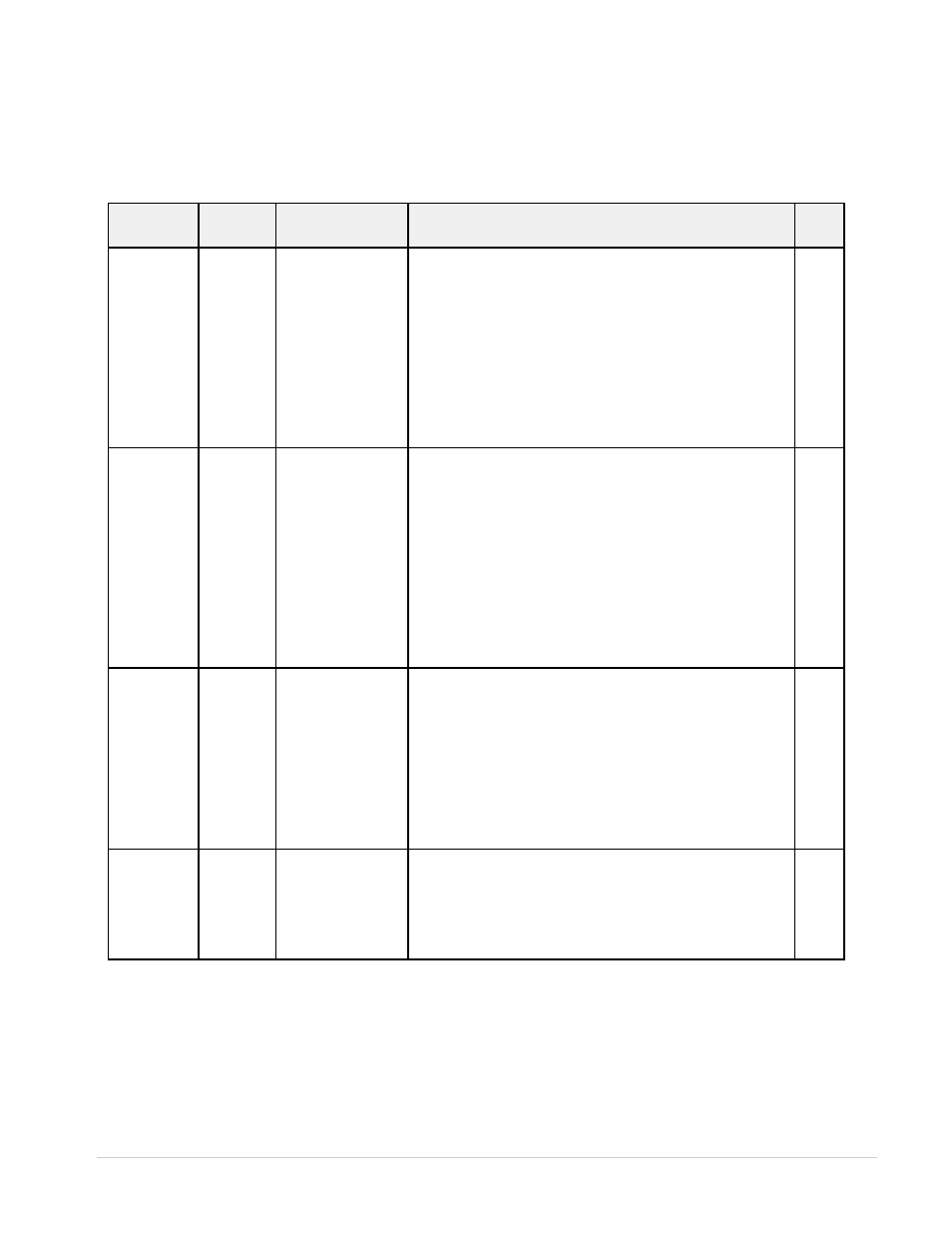Relative timecode range fields – Grass Valley K2 Edge Protocol Manual v1.0 User Manual
Page 43

K2 Edge Protocol Manual – document version 1.0 – Page 43
6.3.4. Relative timecode range fields
Similar to the timecode range fields above, but this time with relative timecode values (i.e. relative to start
of file), meaning that the first valid frame produced by the decoder will always be referred to as having
time value 00:00:00:00.
field name field
type
value
description
since
rtc-start
optional hh:mm:ss:ff
timecode string in
timecode format
of media file
Relative timecode of the first frame of the range to be
played. Relative meaning that the first valid video
frame always has time 00:00:00:00.
This start time applies to all input files, unless
overruled by a dedicated
fileN-tc-start or
fileN-rtc-start field.
If not specified, playback will start with the first valid
frame found in the file.
1.56
rtc-end
optional hh:mm:ss:ff
timecode string in
timecode format
of media file
Relative timecode of the last frame of the range to be
played. That is, this time is inclusive. Relative meaning
that the first valid video frame always has time
00:00:00:00.
This end time applies to all input files, unless overruled
by a dedicated
fileN-tc-end or fileN-rtc-end
field.
If not specified, playback will continue up to and
including the last valid frame found in the file.
1.56
fileN-rtc-
start
optional hh:mm:ss:ff
timecode string in
timecode format
of media file
Similar to the
rtc-start field, but only applies to the
media file defined with the associated
fileN field. N is
in the range [0, ...].
For example, if a complex source string defines a clip
comprised of three media files, it is possible to define
an individual rtc-start time for the last input file with
something like
rtc-start=00:11:00:00; file2-
rtc-start=00:10:42:00;
1.56
fileN-rtc-
end
optional hh:mm:ss:ff
timecode string in
timecode format
of media file
Similar to the
rtc-end field, but only applies to the
media file defined with the associated
fileN field. N is
in the range [0, ...].
See
fileN-rtc-start for an example.
1.56
